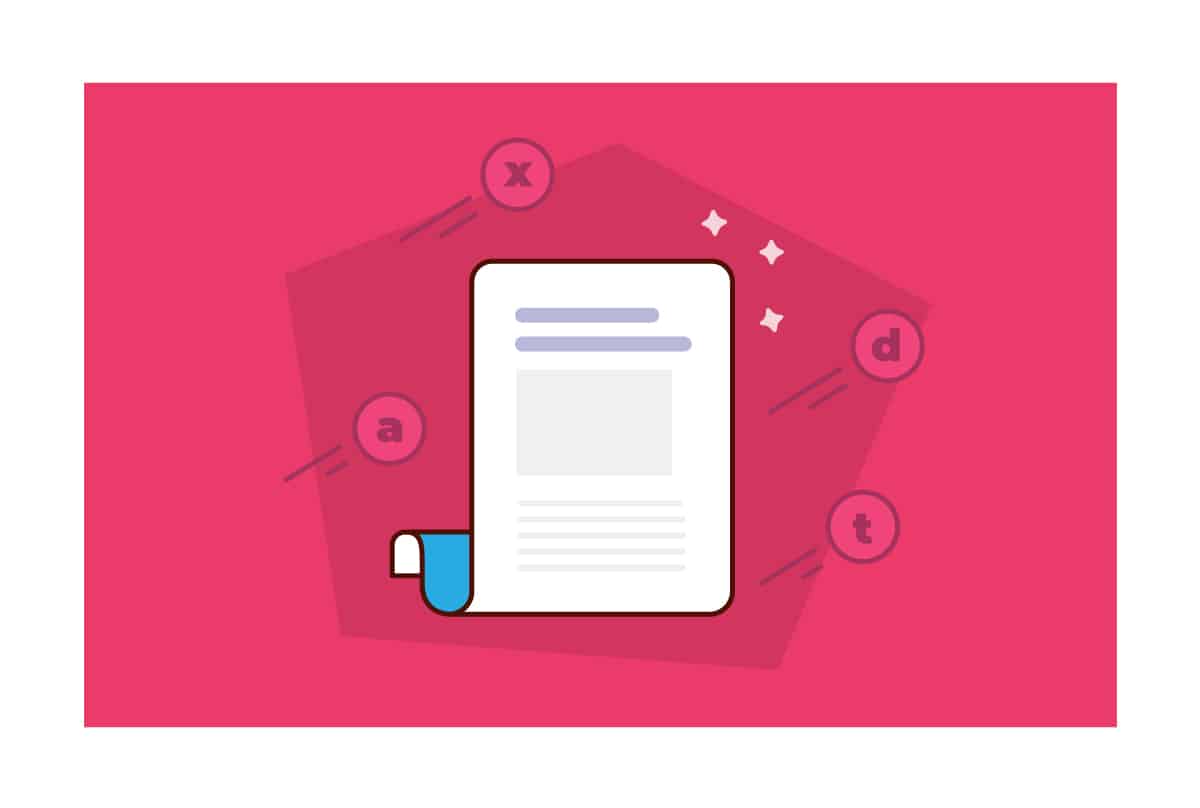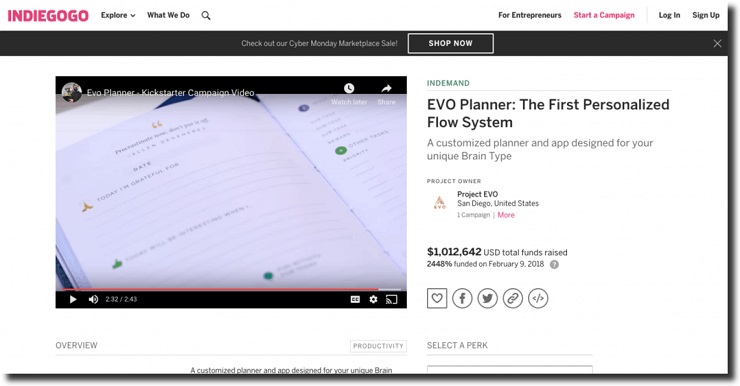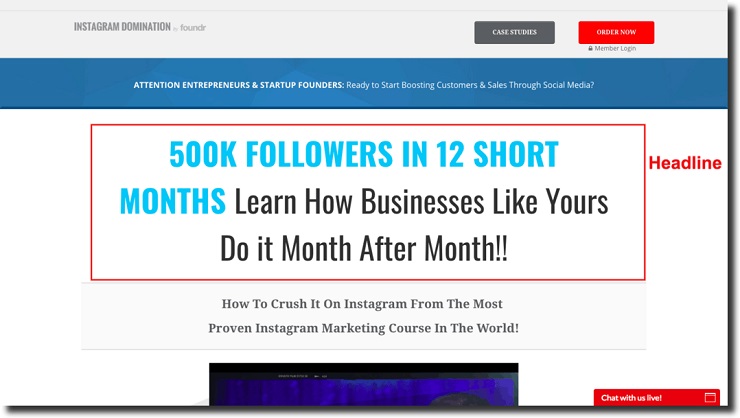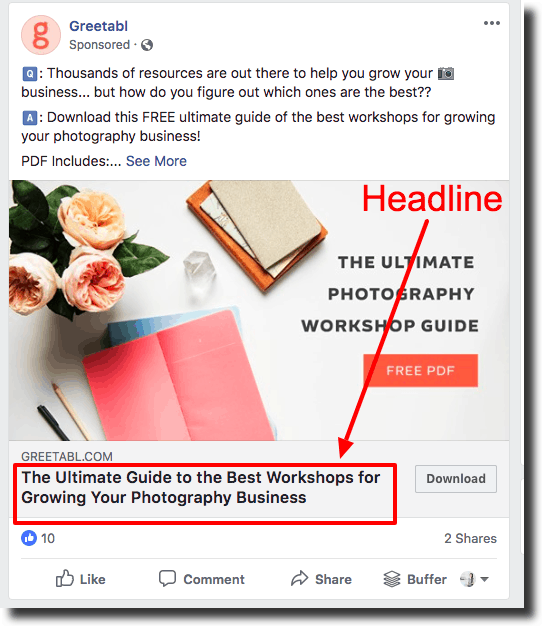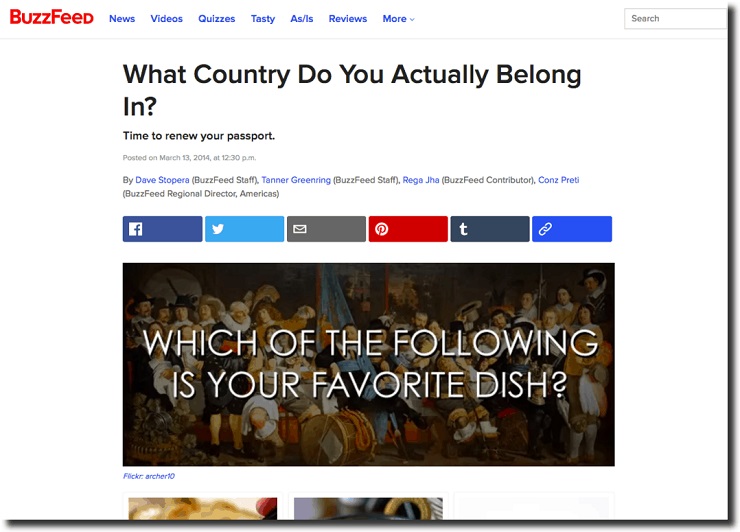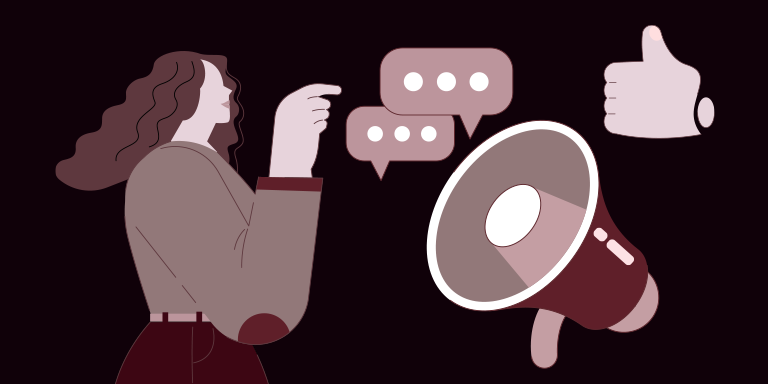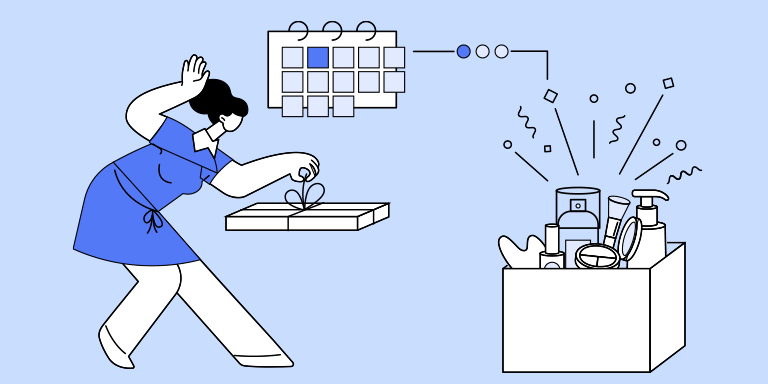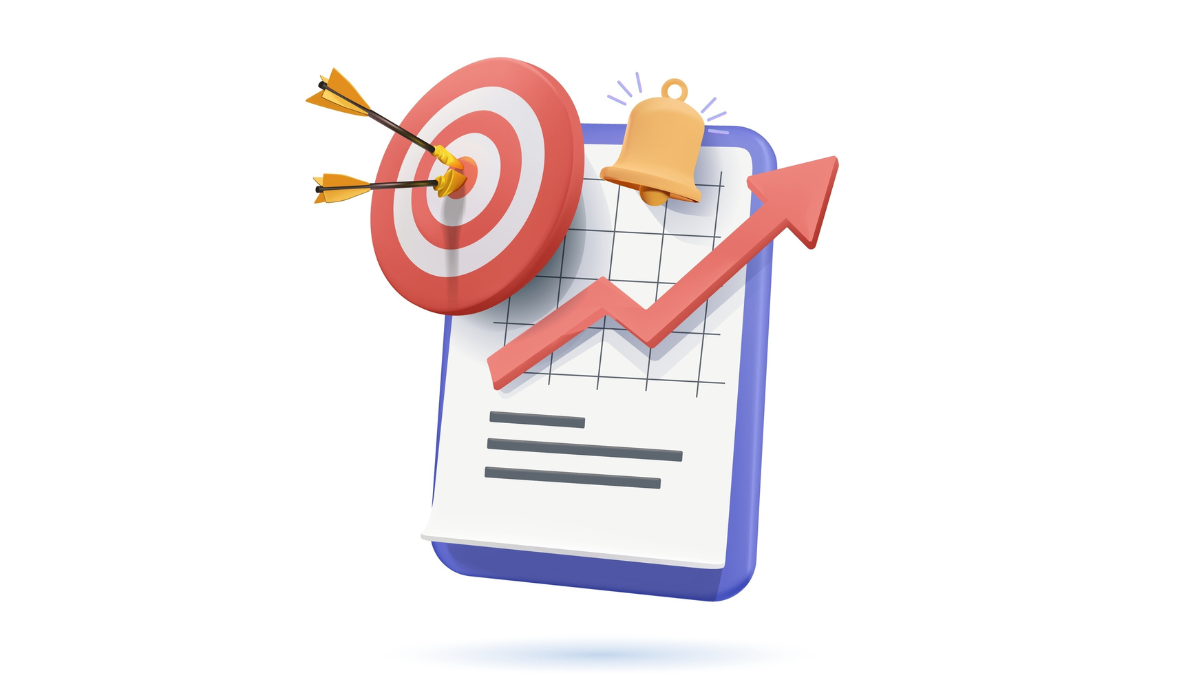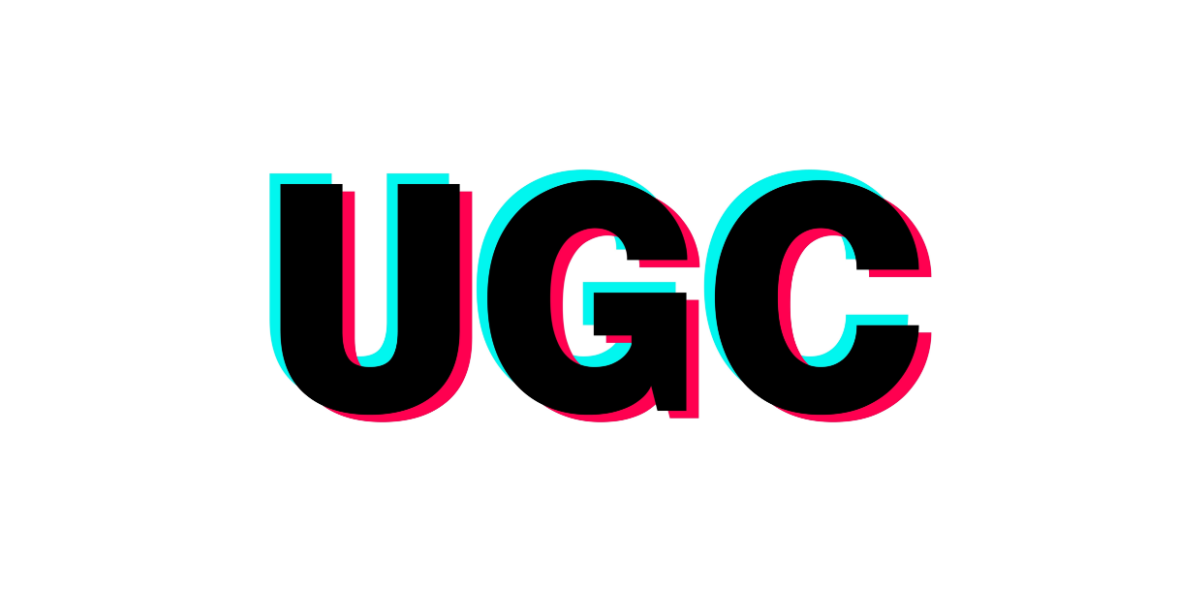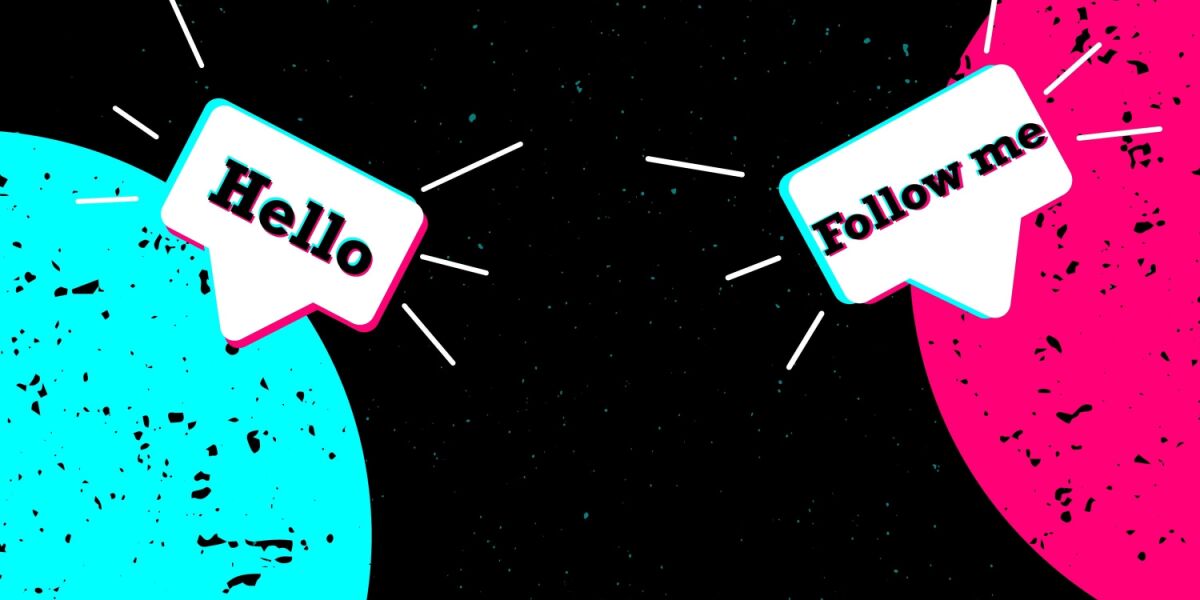In January 2018, a new planner hit the already crowded productivity market and amassed $1 million in sales in less than a year. And here’s the real kicker: The product hadn’t even been made yet.
What was the secret to the EVO Planner’s insane growth? How did the company manage to get thousands of customers to put down money for a product that hadn’t gone into production yet? Compelling copywriting, including an irresistible headline that captured, in just a few words, what made this planner unique.
We can learn a lot from Project EVO’s rapid rise to the top. Namely, that copywriting matters. Write better headlines, and you’ll attract more readers, ultimately leading to more sales and revenue.
Let’s break down the art and science of the headline and see how we can apply it to your business.
FREE Masterclass: The Genius “10-Step Copywriting Framework” Behind 11 Different 7-Figure Launches
What Is a Headline?
Though headlines often make you think of a newspaper, they go way beyond article titles. Headlines can be:
- The first line of a sales page, like this one for Foundr’s Instagram course:
- The first and most prominent part of an advertisement. Here’s an example of a headline in a Facebook ad for Greetabl:
- An email subject line, like this one from LendingClub:
As you can see, the headlines is the first thing a reader sees in our marketing collateral, so let’s make it count.
Why Do Headlines Matter?
Because, as copywriting legend Joseph Sugarman wrote, “The sole purpose of the first sentence in an ad is to get you to read the second sentence.” And the first thing a reader sees in an email or blog post is your headline. By changing just one word in an email subject line, QuickSprout’s clients have seen click-throughs increase by 46%. The more people who open your email, the better chance you have of making more sales.
Without a compelling headline, your reader will not click. And if your reader doesn’t click, you won’t make a sale. To put this another way, if your headline isn’t doing its job, all of the other copy you’ve written is wasted.
Because of this, you should be spending a considerable amount of time writing better headlines—even more time than you spend on the body of the post or email itself.
What Makes a Great Headline?
It’s Informative
The main purpose of a headline is to inform the reader of what they’re about to read. Fail at this, and your reader is likely to feel cheated or misled. Don’t waste people’s time with an ambiguous, or even worse, a bait-and-switch headline.
And just how much information should you pack into it? Finding the ideal number of words can give us a guideline. After analyzing 100 million headlines, BuzzSumo found that headlines 12-18 words in length performed the best in terms of engagement.
It Doesn’t Give It all Away
The main purpose of copywriting is to get the reader to read the next sentence—so a good headline melds the above tip of being informative with the copywriting goal of being intriguing.
This is where Upworthy shines. In 2012, the feel-good news site garnered 8.7 million uniques by its seventh month and earned its place as the fastest-growing media site at the time. How? It mastered the art of writing compelling headlines that you just had to click.
Take a look at some of these headlines from the site:
- She walked off a flight in tears and with a wad of cash. Her viral post explained why.
- 9 out of 10 Americans are completely wrong about this mind-blowing fact
- Some Strange Things Are Happening To Astronauts Returning To Earth
With each headline, notice how you get a general idea of what the article is about, but it leaves you hanging on one tantalizing detail that you feel compelled to find out. This is what leads to the click.
As we’ll explain in a moment, Upworthy’s initial magic eventually faded as readers burnt out on their particular style of headline. But the lesson lives on strong in online copywriting—leave headline readers wanting to know a little more.
This is known as a “curiosity gap,” and copywriter Laura Belgray uses it often in her email subject lines. Here’s an example she gives:
- Subject line with no curiosity gap: Bananas have the most potassium.
- Subject line with curiosity gap: What’s cheap, delicious, and stops leg cramps?
See how one gives the entire subject away, but the other only hints at it? Belgray writes, “Evoke curiosity. Use a subject line that leaves us guessing in some way. There’s information missing, and it’s irresistible to our puzzle-solving human brains.”
It’s Relevant to Your Audience
Knowing the voice and tone of your brand is essential, because you want your ideal customer to feel like you’re writing for them. This extends to your headlines, too.
Take a look at the very different brand voices reflected in the following headlines about the same topic: creating a blog business plan. You’ll probably be able to guess their target audience by the way they’ve worded the headline (and if you can’t, I’ve included it below):
- A 5-Step Business Plan On How to Make $50K a Month From Your Blog (Based On Advice From 6-Figure Bloggers). This is one of our posts on the Foundr blog. We target young, aspiring entrepreneurs who love detailed, action-oriented content.
- How to Create a Bangin’ Blog Business Plan (Workbook Included!). This is a post from online business expert Melyssa Griffin, and her audience consists largely of young women interested in starting an online business. Her brand voice is often playful and casual, which is reflected in her word choice and the use of an exclamation mark.
- A Blog Business Plan For Style Bloggers. This blog post by Mattie James is simple and clear. She directly states who she’s targeting: style bloggers.
It’s SEO-Friendly
If you’re writing a headline for a blog post, it needs to be SEO-friendly to rank well in Google search. Try to incorporate your target keyword in the headline. Implement this tip last, though. It’s more important to write for your audience, rather than Google, first and foremost.
It Doesn’t Contain Spammy Words
If you’re writing an email subject line, you have to be careful not to use “spam trigger words.” These words trigger spam filters in email clients and make your emails get sent straight to “Junk.” Some spammy words to avoid are:
- Free
- Sale
- Money
- Order
- Incredible deal
- Click
- Offer
It’s Personalized
With email marketing software, you can get really personalized in your subject lines, down to the subscriber’s first name. Even if you’re writing a blog post headline, though, and can’t get quite that granular, you can still personalize the headline based on your audience. Remember the headline we talked about above, where the blogger wrote “for style bloggers” at the end? That was one way she personalized her headline to appeal directly to her target audience, rather than to all bloggers.
FREE Masterclass: The Genius “10-Step Copywriting Framework” Behind 11 Different 7-Figure Launches
The Tricky Business of Clickbait
Like many startups, Upworthy’s meteoric rise was followed by a crash. The very thing that had helped it succeed in the first place nearly became its undoing—those clickbait headlines.
In 2014, because of backlash against headlines that tricked them into clicking, Facebook updated its algorithm to de-prioritize posts with headlines that looked like clickbait. After these changes to the News Feed, Upworthy’s traffic dropped.
So what’s the difference between intriguing copy and clickbait? To me, as the popular saying goes, it isn’t clickbait if it follows through on its promise. Entice your readers, then deliver on the headline. Don’t trick them. I find that the easiest way to determine if it’s clickbait is to do a quick gut check. If you were a reader and came across this headline, clicked through, and then read the body copy, would you feel deceived? If so, don’t use it.
Case Studies Showcasing Great Headlines
Okay, enough about the theory of writing better headlines. Let’s see it put into practice. Here are some case studies that showcase great headlines that skyrocketed traffic, clicks, and conversions.
‘Make More Money on Your Bets. Get Free Betting Tips’
Conversion rate optimization expert Michael Aagaard wrote a post for Unbounce comparing three common headline-writing formulas: the benefit headline, the loss-aversion headline, and the question headline. Let’s see how they stacked up.
In the first case study of headline testing for BettingExpert.com, Aagaard tested these three headlines:
- Control headline (Question): “Passionate about Betting? We are Too”
- Treatment one (Benefit): “Make More Money on Your Bets – Get Free Betting Tips”
- Treatment two (Loss aversion): “Stop Losing Money on Your Bets – Get Daily Betting Tips”
Guess which one resulted in the highest conversion rate? Treatment one, the benefit headline. In fact, the same was true in the next two case studies: The benefit headline outperformed both the question and loss-aversion headlines
Aagaard confirms that this is the overall pattern he’s seen in the many headline tests he’s run before. “A clear headline that focuses on a benefit generally performs best.”
‘33 Amazingly Useful Websites You Never Knew Existed’
We’ve all found ourselves clicking those Buzzfeed headlines to find out which country we really belong in or to coo at the 27 cutest cats on the internet.
To examine the media giant’s uncanny ability to get us to click, TrackMaven analyzed some of BuzzFeed’s most successful headlines. Here are the three recurring themes they found across these headlines:
- Question headlines encourage social sharing. Of the 1.2 million BuzzFeed blog posts they analyzed, only about 5% contained a question mark, but that 5% of blog posts yielded 46.3% of social shares.
- Lists make us click. BuzzFeed’s headline formula is basically:
Number + Adjective + Noun + Descriptive Clause
Examples of this are “28 Shocking Animal Pictures That Prove The Illuminati Is All Around Us” and “33 Amazingly Useful Websites You Never Knew Existed.”
- Emotional words grab us. Even if a BuzzFeed article lacks a question or a number, it always has words that elicit an emotional reaction, such as this headline: “This Dad Has The Most Adorable Reaction to Discovering He’s Going To Be A Grandpa.” With all the feel-good emotional words injected into that headline, who wouldn’t want to click?
‘Natural Joint Relief Supplement’
Never underestimate the power of changing—or in this case, adding—one word. Movexa wanted to increase sales from its landing page for a joint support supplement. Here’s how the A/B test looked:
- Control headline: Natural Joint Relief
- Variation headline: Natural Joint Relief Supplement
The results? The variation beat the control by 89.97%! All thanks to one word.
Case Studies and Examples of Good Email Subject Lines
Now let’s take a look at some email subject lines that saw a boost thanks to a keen understanding of headline writing principles.
‘Grow Your Email List 99% Faster: How One Site Did It’
AWeber analyzed 20 subject lines of its marketing emails sent to 45,000 subscribers to see which ones performed best: Creative subject lines or clear ones?
Creative subject lines included:
- AWeber’s Awesome Anthony A.
- Getting Earth-Friendly Beyond Email
- Threadless’ Frequency Alert: Hot or Not?
Clear subject lines included:
- Grow Your Email List 99% Faster: How One Site Did It
- 43 Free Animated GIFs For Your Email Campaign
- Email Timing: A Look At 6 Marketers
So which type won? AWeber found that clear subject lines, rather than creative ones, garnered 541% more responses, which included comments, tweets, Facebook likes, and traffic.
‘Please put us out of our misery’
Sometimes you can break the rules and get rewarded. This test shows how the creative won over the descriptive. In an attempt to re-engage inactive customers, Money Dashboard A/B tested two subject lines for a customer survey email.
- Control subject line: What’s your opinion here first name?
- Variation subject line: Please put us out of our misery
For the inactive segment of subscribers, there was a 104.5% increase in opens with the variation subject line—”Please put us out of our misery”—which broke the rules that say subject lines should be simple and clear. It’s worth noting, however, that the subject line did follow a couple of other copywriting rules: It triggered emotion and intrigue.
This type of provocative subject line might not work if it doesn’t align with your brand voice and if your customers don’t feel a strong connection to you. The case study author writes, “It’s conceivable that this subject line on a customer base with lower brand affinity would not win.”
‘Social Media Stats You Need to Know for 2014’
Copywriters have long known the power of the word “you.” Wishpond put that power to the test when they A/B tested two subject lines:
- Test A: “Social Media Stats You Need to Know for 2014”
-
- Test B: “Social Media Stats for 2014”
Which one was the winner? Test A, the subject line that had “you,” had an open rate of 37% while Test B had only 26%.
FREE Masterclass: The Genius “10-Step Copywriting Framework” Behind 11 Different 7-Figure Launches
How Will You Write Better Headlines for Your Business?
While not all of us will experience insane growth of Project EVO proportions, we can all write better headlines. It just takes a little practice. If you want to get more clicks, improve conversions, and boost your revenue, remember these guidelines when writing your headlines:
- Be informative.
- Create a “curiosity gap.”
- Make it relevant to your audience.
- Use SEO keywords.
- Avoid spam trigger words.
- Personalize it.
That’s a lot to take in, but there’s no need to get overwhelmed. If you want to get started right away, go back to your top 10 blog posts, email templates, and sales pages and try rewriting the headlines and running A/B tests to see which ones work best.
What’s one of your favorite headlines that compelled you to click? Share examples with us in the comments below!
